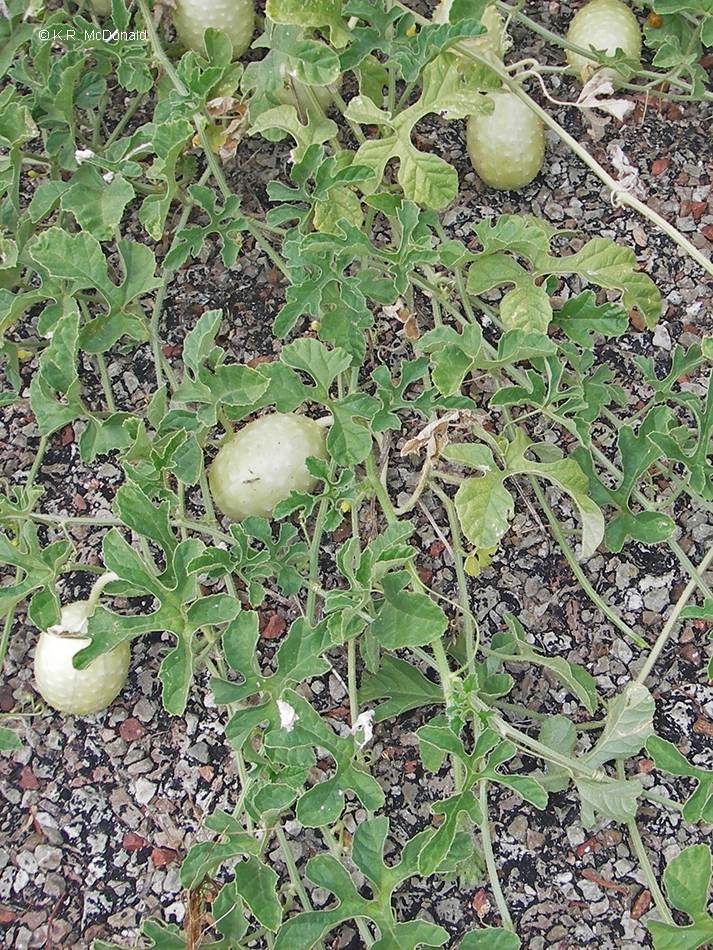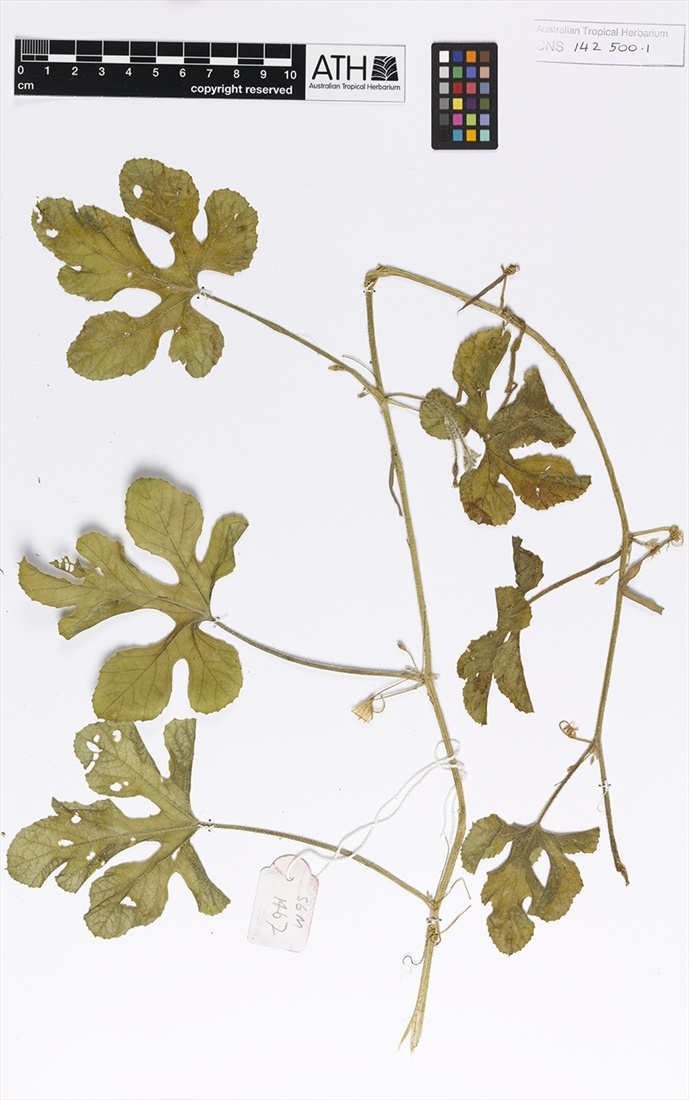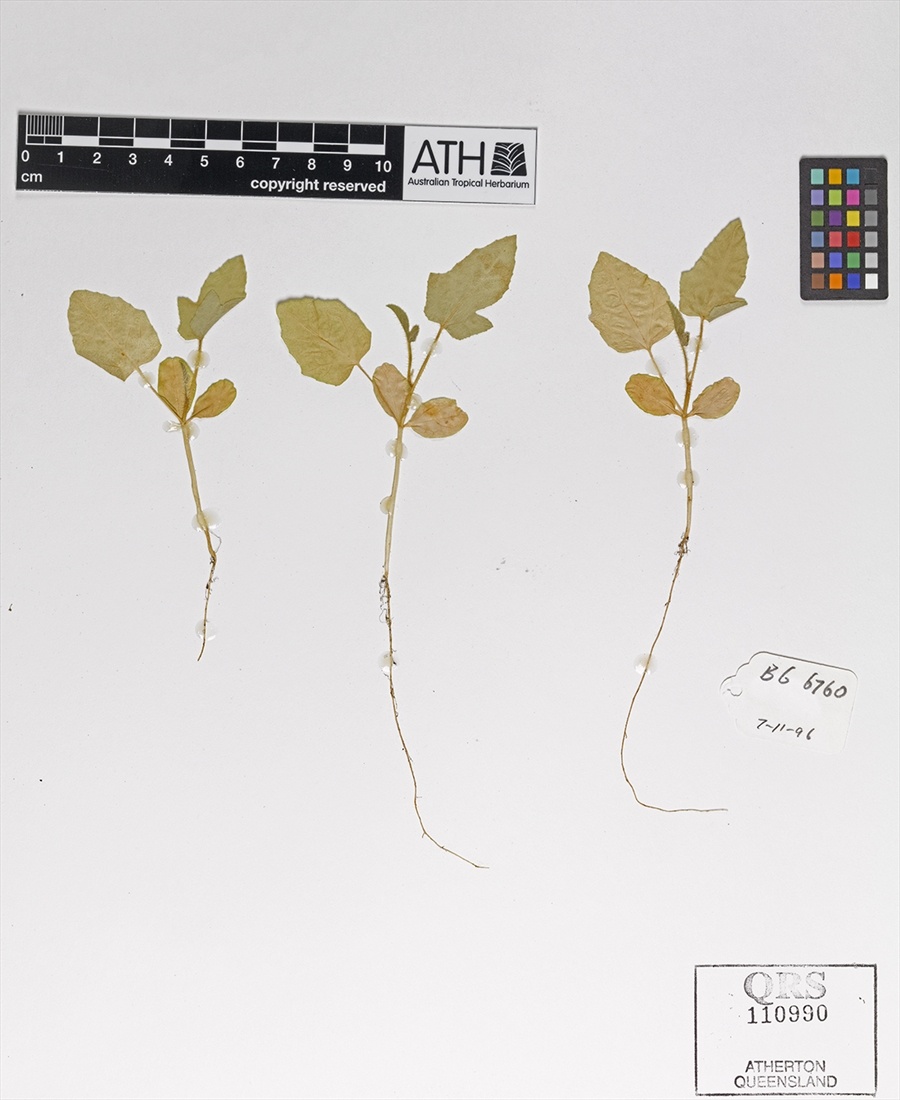Australian Tropical Rainforest Plants - Online edition
Cucumis anguria L. var. anguria






Meeuse, A.D.J. (1958) Blumea Supplementary Series 4: 200.
West Indian Gherkin
A slender trailing or climbing annual herb, all parts densely hispid; stems ribbed, to 3 m long x 4 mm diameter. Tendrils simple, clothed in hispid hairs; tendrils leaf-opposed.
Inflorescences unisexual. Male flowers: solitary or borne in fascicles of 2-10 flowers, or in pedunculate groups; flowers about 8 mm diam; calyx tube (hypanthium) about 3-3.5 mm long, lobes linear about 0.5-2 mm long; corolla lobes ovate about 3.8-6 mm long, yellow; stamens 3, two stamens with 2-locular anthers and one stamen with a unilocular anther. Female flowers: solitary; pedicels 10-95 mm; ovary 7-9 mm long, bristly.
Cotyledons elliptical, about 17-18 x 11-12 mm. First leaf simple, ovate, second leaf simple with a lobe on each side at the base. At the tenth leaf stage: leaf blades about 65 x 59 mm, petioles about 35 mm long, margins deeply lobed. Tendrils present. All plant parts densely clothed in long, multicellular, simple, spine-like hairs.
An introduced species of West Indian origin now naturalised in WA, CYP, NEQ, CEQ and southwards as far as north-eastern New South Wales. Altitudinal range in northern Australia from near sea level to 720 m. Usually grows in open disturbed areas and sometimes on edge of vine thickets and other rainforests. Widely naturalised elsewhere in the world.
2705





